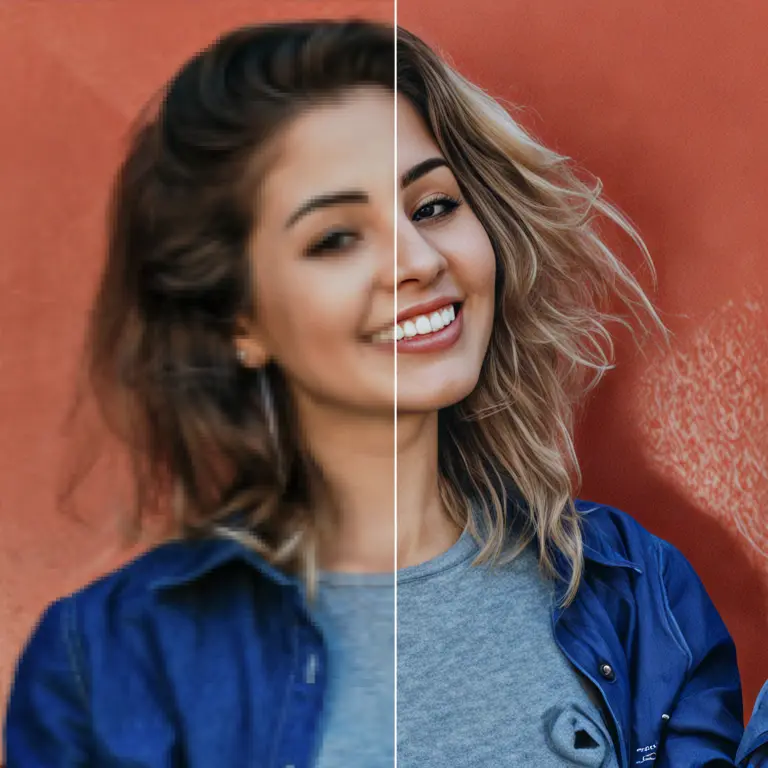ComfyUI Extension: ComfyUI-EbSynth
ComfyUI-EbSynth
Fuou Marinas (Account age: 1966 days) Nodes
View all nodes(4) Latest Updated
2025-03-30 Github Stars
0.09K
How to Install ComfyUI-EbSynth
Install this extension via the ComfyUI Manager by searching for ComfyUI-EbSynth- 1. Click the Manager button in the main menu
- 2. Select Custom Nodes Manager button
- 3. Enter ComfyUI-EbSynth in the search bar
Visit ComfyUI Online for ready-to-use ComfyUI environment
- Free trial available
- 16GB VRAM to 80GB VRAM GPU machines
- 400+ preloaded models/nodes
- Freedom to upload custom models/nodes
- 200+ ready-to-run workflows
- 100% private workspace with up to 200GB storage
- Dedicated Support
ComfyUI-EbSynth Description
ComfyUI-EbSynth enables fast example-based image synthesis and style transfer within the ComfyUI framework, allowing users to efficiently apply artistic styles to images.
ComfyUI-EbSynth Introduction
ComfyUI-EbSynth is an extension designed to integrate the powerful capabilities of EbSynth into the ComfyUI environment. EbSynth is a tool for fast example-based image synthesis and style transfer, allowing you to transform images and videos by applying the style of one image to another. This extension leverages the EbSynth Python library, making it easier to use and maintain while providing advanced features like masking support and visual bug fixes.
With ComfyUI-EbSynth, AI artists can achieve stunning visual effects, such as style transfer, color transfer, inpainting, superimposition, and video stylization. This extension simplifies the process of applying complex image transformations, making it accessible even to those without a strong technical background.
How ComfyUI-EbSynth Works
ComfyUI-EbSynth works by using example-based synthesis to transfer the style of one image (the style image) to another image or video (the target). The process involves several key steps:
- Style Image: This is the image whose style you want to apply to the target image or video.
- Guides: These are additional images that help guide the style transfer process. They can include edge detection maps, optical flow maps, and other auxiliary data that improve the accuracy and quality of the synthesis.
- Synthesis: The extension uses the EbSynth algorithm to blend the style image with the target image, guided by the additional data. This results in a new image or video that combines the content of the target with the style of the style image. By breaking down the process into these steps, ComfyUI-EbSynth allows for precise control over the style transfer, ensuring high-quality results.
ComfyUI-EbSynth Features
Image Synthesis
- Style Transfer: Apply the style of one image to another, creating visually stunning results.
- Color Transfer: Transfer the color palette of the style image to the target image.
- Inpainting: Fill in missing or damaged parts of an image using the style image as a reference.
- Superimposition: Overlay the style image onto the target image, blending them seamlessly.
Video Stylization
- Frame-by-Frame Processing: Apply style transfer to each frame of a video, creating a consistent and smooth visual effect.
- Optical Flow: Use advanced optical flow techniques to ensure that the style transfer is coherent across frames, reducing artifacts and improving quality.
Customization Options
- Edge Detection Methods: Choose from different edge detection methods (PST, Classic, PAGE) to guide the style transfer.
- Optical Flow Models: Select from various optical flow models (RAFT, EF_RAFT, FLOW_DIFF) to improve the accuracy of the synthesis.
- Masking: Apply masks to control which parts of the image are affected by the style transfer.
- Blending Modes: Customize the blending process to achieve the desired level of integration between the style and target images.
ComfyUI-EbSynth Models
ComfyUI-EbSynth supports different models for edge detection and optical flow, each suited for specific tasks:
Edge Detection Models
- PST (Phase Stretch Transform): Provides good overall structure but lacks fine detail.
- Classic: Balances structure and detail, suitable for most use cases.
- PAGE (Phase and Gradient Estimation): Offers great detail and structure but is slower.
Optical Flow Models
- RAFT: A robust model for optical flow estimation, suitable for general use.
- EF_RAFT: An efficient version of RAFT, optimized for faster performance.
- FLOW_DIFF: Uses diffusion models for optical flow estimation, providing high accuracy but requiring more computational resources.
Troubleshooting ComfyUI-EbSynth
Common Issues and Solutions
- Style Transfer Artifacts:
- Solution: Ensure that the style and target images are well-aligned and that the guides are accurate. Adjust the edge detection and optical flow settings to improve results.
- Slow Performance:
- Solution: Use more efficient models like EF_RAFT or reduce the resolution of the images. Ensure that GPU acceleration is enabled if available.
- Masking Errors:
- Solution: Verify that the masks are correctly applied and that the mask input is valid. Adjust the feathering and pre-mask settings as needed.
Frequently Asked Questions
- Q: Can I use ComfyUI-EbSynth for real-time video processing?
- A: While ComfyUI-EbSynth is optimized for performance, real-time processing may not be feasible for high-resolution videos. Consider pre-processing the video frames and then applying the style transfer.
- Q: How do I choose the right edge detection method?
- A: The choice depends on your specific needs. PST is fast but less detailed, Classic offers a good balance, and PAGE provides the best detail but is slower.
Learn More about ComfyUI-EbSynth
To learn more about ComfyUI-EbSynth and how to use it effectively, explore the following resources:
- EbSynth GitHub Repository: The original EbSynth project with detailed documentation and examples.
- Ezsynth GitHub Repository: The Python library that powers ComfyUI-EbSynth, with additional features and improvements.
- ComfyUI-EbSynth GitHub Repository: The official repository for the ComfyUI-EbSynth extension, including installation instructions and usage examples. By leveraging these resources, you can unlock the full potential of ComfyUI-EbSynth and create stunning visual effects with ease.
ComfyUI-EbSynth Related Nodes
RunComfy is the premier ComfyUI platform, offering ComfyUI online environment and services, along with ComfyUI workflows featuring stunning visuals. RunComfy also provides AI Models, enabling artists to harness the latest AI tools to create incredible art.


